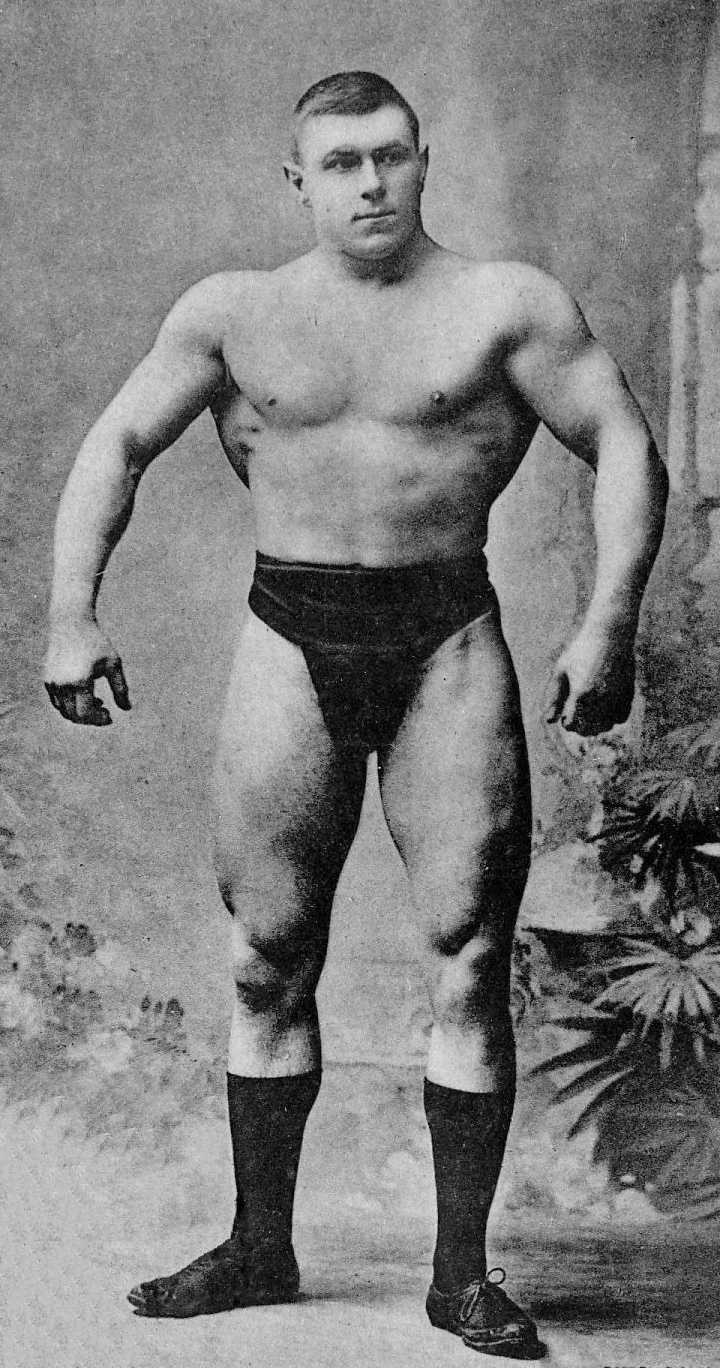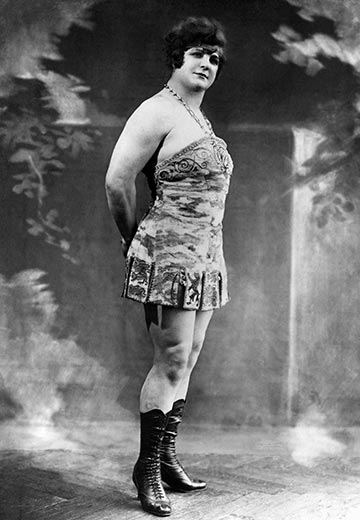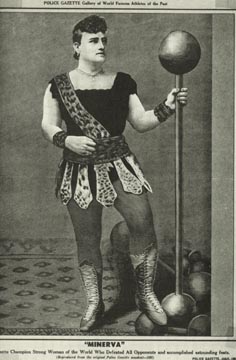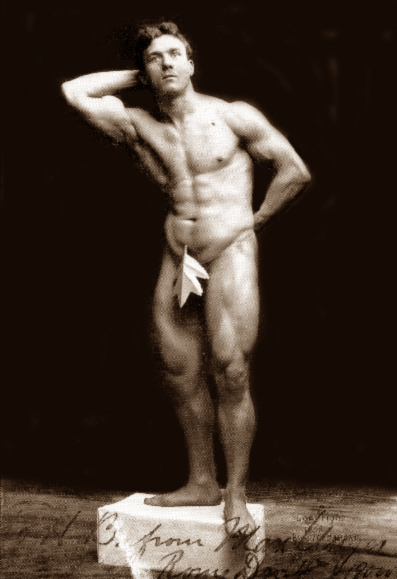There’s just something about old-timey strongmen and strongwomen. Their combination of physicality, mystery, showmanship, and flowery, grandiose language made their sport fresh, exciting, and romantic.
In the Victorian era, the advent of photography, video, and more accessible international travel rejuvenated the role of the traveling strongperson and brought them to a larger audience than ever before. To much of the wide-eyed public, their feats seemed positively godlike.
Those with marketing savvy also knew how to cash in. Many athletes from the late nineteenth and early twentieth centuries wrote an enormous amount of articles and mail order programs. Some of their programming was years ahead of its time, featuring training advice we still use today and that modern science took decades to conclusively prove.
Some of it — like “abstinence builds muscle” — was malarkey.
Thanks to the online libraries at The Stark Center and The History of Physical Culture, we’ve rounded up some of the best and worst advice from the biggest figures in old-timey strength.
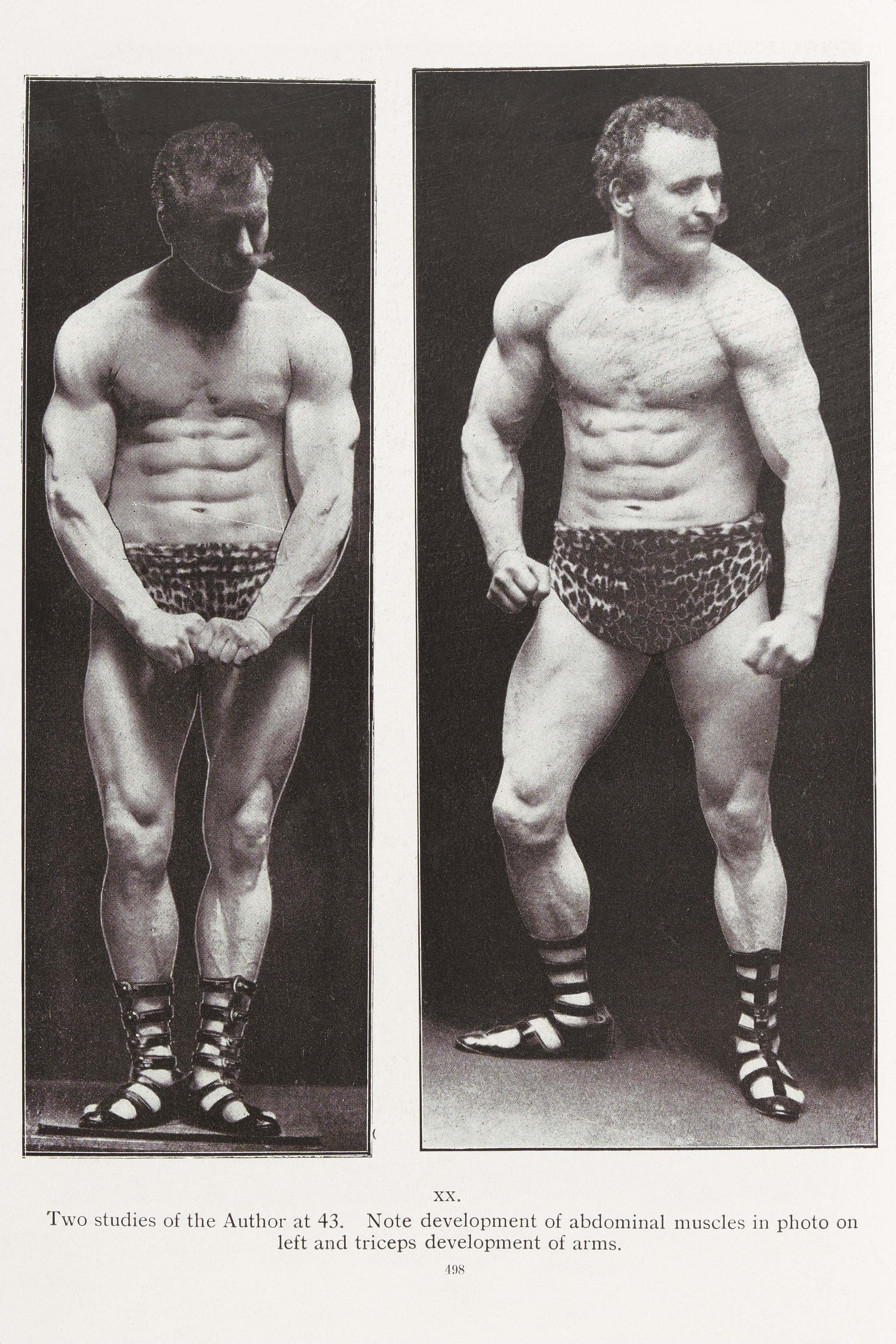
Image by Wellcome Images, licensed under CC BY 4.0, via Wikimedia Commons
Eugen Sandow
What He Got Right
Strength training means self-respect
“The man who means to make his body as nearly perfect as possible must cultivate habits of self-control and of temperance. (…) The man who has cultivated his body has also cultivated self-respect.” (Strength and How to Obtain It, 1897)
Recovery is important
“Good health depends on sound sleep as well as upon good nutrition. (…) People who see to do with small amount of sleep are burning their lives at both ends, and wasting nature’s reserve of vitality. (…) I sleep nine hours always and often more.” (How to Preserve Health and Attain Strength, 1894)
Exercise improves immunity
“Remember, that muscular action, by accelerating the circulation and increasing the absorption of nutritive material, not only assists the regenerative processes, but wards off disease.” (How to Preserve Health and Attain Strength, 1894)
What He Got Wrong
Walking is crummy exercise
“Walking, as an exercise, is defective. (…) The movements are monotonous and unvaried, and the walker finds himself tired before perspiration is induced.” (Strength and How to Obtain It, 1897)
George Hackenschmidt
What He Got Right
Strength training breeds confidence
“The knowledge of one’s strength entails a real mastery over oneself; it breeds energy and courage, helps one over the most difficult tasks of life, and procures contentment and true enjoyment of living. Who would still lag behind in activity and weakness?” (The Way to Live, 1908)
Modern life can make us weak
“There are fewer plagues and pestilences (today), but there would appear to be an infinitely greater number of sickly, weedy, stunted people than there used to be. The reason is not far to seek. There is (…) a vast increase in the numbers of those who are engaged in indoor and sedentary occupation, and only here and there is any attempt made to combat the consequent unhealthy conditions of life with the only satisfactory weapon: Rational Physical Exercise.” (The Way to Live, 1908)
What He Got Wrong
Sex and coffee are bad for gains
“Moderation in sexual intercourse is very important. Sexual (abstinence) should be strictly observed during the early age of manhood and development. He who observes this recommendation will soon benefit by the immense prerogatives of chastity. (…) Coffee is a stimulant, and, as such, would be better off avoided entirely.” (The Way to Live, 1908)
Abbye “Pudgy” Stockton
What She Got Right
Lifting weights won’t make women bulky
“In (the 1940s), lifting weights was thought to be unfeminine. The misinformed think if women strength-trained, they’d become masculine looking or wouldn’t be able to get pregnant. We laughed, knowing they were wrong.” (L.A. Times interview, 2002)
‘Before’ and ‘after’ photos aren’t everything
“Before’ and ‘after’ pictures are particularly impressive but still do not tell the entire story. (…) The pictures and the measurements are definitely necessary, but let’s not neglect the personality changes that occur (…) The true improvement is found in their new attitude towards life – the personality changes that accompany good health.” (Strength and Health Magazine, August 1950)
The first step is the hardest
“I know that it’s so much easier just to do nothing, but you must have the strength of will to take action. The women in my Los Angeles studio do not feel exercise is a chore (…) They know they are benefiting themselves (…) After you start, your improvement and your increased feeling of well being show you the benefits – but at first you must act and you alone.” (Strength and Health Magazine, January 1950)
What She Got Wrong
Milk is an essential part of a lifter’s diet
“Eat heartily of the proper foods – a quart of milk daily is a must.” (Strength and Health Magazine, November 1944)
Katie Sandwina
What She Got Right
Corsets are stupid
“No, I don’t wear (corsets). And what do I think of them? From the point of view of health, it is a most foolish thing to wear them. And, besides, a man who is embracing a woman wants to hold a supple and warm body in his hands – not a lobster!” (Talking With the World’s Strongest Woman, 1910)
What She Got Wrong
Alcohol can’t affect performance
“There’s nothing to beat a good glass of beer or a fine bottle of wine. I think it’s nonsense when athletes avoid these things.” (Talking With the World’s Strongest Woman, 1910)
Earl Liederman
What He Got Right
Lift heavy, not light
“It is far better to exercise a few minutes each day and do heavy, vigorous movements than to waste an hour of your time doing light exercises. If you do light work only, your muscles will be built for light work only.”(Muscular Development, 9th Edition, 1922)
Full body workouts are best
“You might do all your arm, shoulder, and upper-back exercises one day; all the leg and lower-back work the second day; and the chest, abdominal and side-exercises on the third day. (…) Under this plan you can make good progress, although you won’t gain as rapidly as does the other fellow who (…) works all his muscles at each exercise session.” (Secrets of Strength, 1925)
What He Got Wrong
A good deadlift is performed with a nice, round back.
Josephine “Minerva” Blatt
What She Got Right
Eat big, lift big
“Eating is about the principal part of my existence (…) and I always have the best I can possibly procure. For breakfast I generally have beef, cooked rare; oatmeal, French-fry potatoes, sliced tomatoes with onions and two cups of coffee.
At dinner I have French soup, plenty of vegetables, squabs and game. (…) When supper comes, I am always ready for it, and I then have soup, porterhouse steak, three fried eggs, two different kinds of salads and tea.” (Minerva Interviewed: A Pleasant Hour With the Strongwoman, 1892)
Lionel Strongfort
What He Got Right
Supersets are good, overtraining is bad
“Never exercise to the point of excessive fatigue. When the muscles begin to tire, stop that particular exercise and pass on to another. In this way, one set of muscles may be resting while another is active. Temporary fatigue indicates a stimulation and exhiliaration, while a general exhaustion is harmful and defeats its own purpose. (Lionel Strongfort Institute Beginner Course, 1931)
What He Got Wrong
Don’t drink water with your meals
“(Water) must be replaced. If not, your system will be forced to absorb it from the bowels. Therefore, always drink plenty of water, but never drink water with your meals.”(Lionel Strongfort Institute Beginner Course, 1931)
Don’t flex when you work out
“When exercising, do not permit yourself to become rigid. If you hold the muscles hard and tense you will prevent free circulation of blood through the tissues.” (Lionel Strongfort Institute Beginner Course, 1931)
Wrapping Up
We can’t really blame the pioneers of modern exercise regimes for getting a few things wrong in their enthusiasm to share with the world the enormous benefits of strength training.
After all, most people weren’t just uninterested in lifting weights, they were baffled as to why anybody would exercise at all. On that note, we’ll leave you with one of our favorite quotes from George Hackenschmidt.
“It may be suggested that there is no reason why a man should go to the trouble and exertion of struggling with heavy weights, since there is no crying necessity for that particular man to acquire any phenomenal degree of strength. To that I would reply by asking why a man should desire to be weak?” (The Way to Live, 1908)
BarBend would like to thank Victoria Felkar, Dominic Morais, Benjamin Pollack, The Stark Center, and The History of Physical Culture for their enormous help putting together this article.
